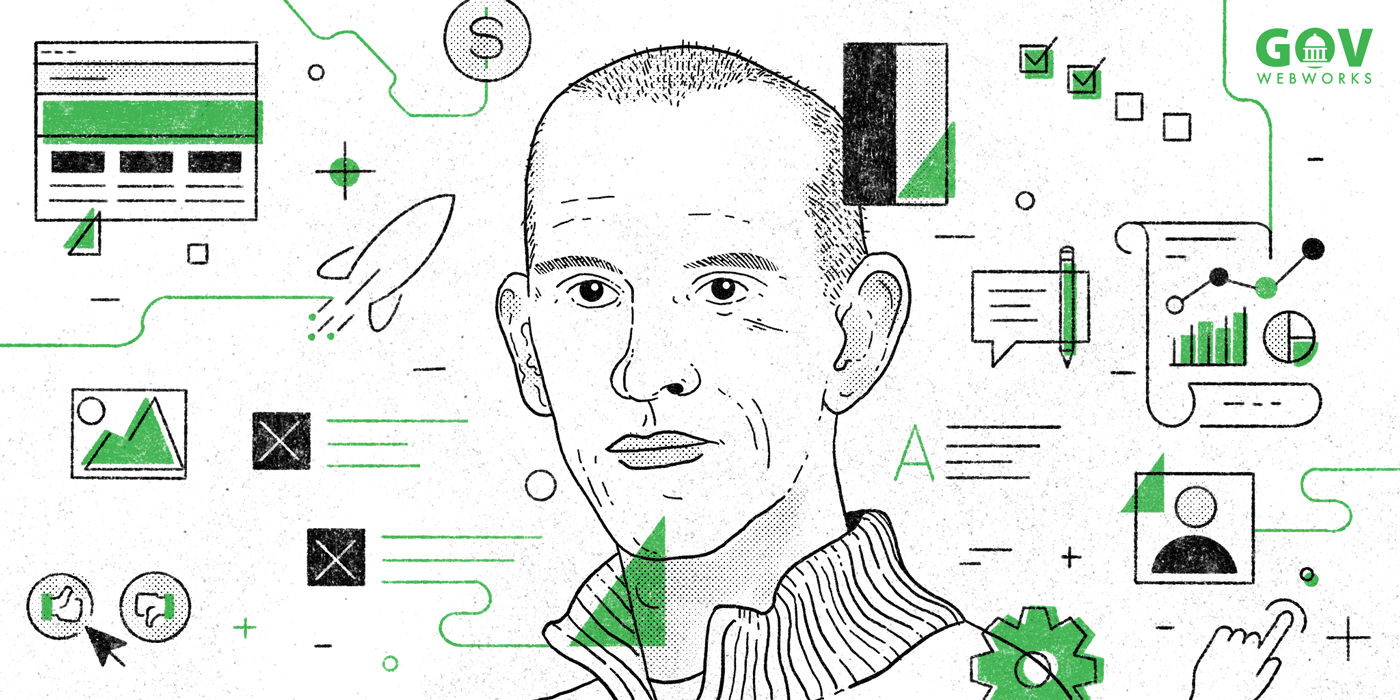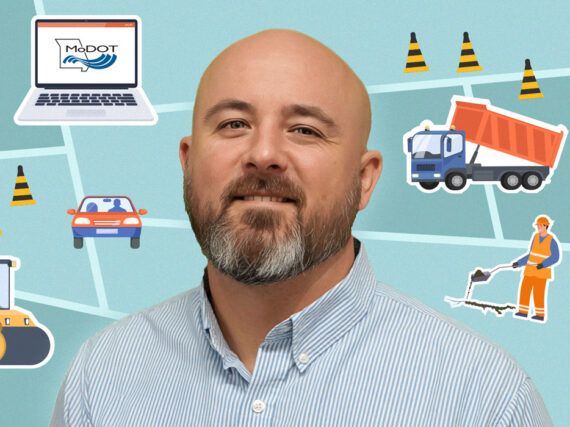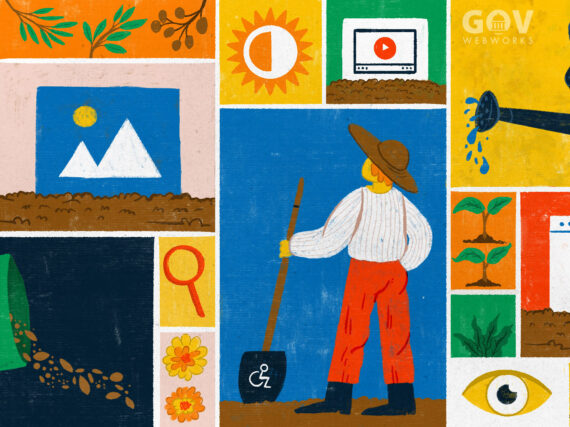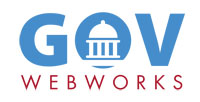In Lead With Content: How to put content at the center of digital transformation, Padma Gillen points out an important reminder for content managers. Successful content (the information on a website or application) is not so much about sentence structure or what images are used, but how well the information meets user needs.
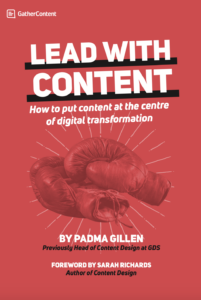
“It involves a shift from telling people what you want them to hear, to meeting the needs that they actually have,” Padma notes on the Content Strategy Answers blog.
As a content strategy consultant and co-founder of Llibertat, Padma isn’t telling content managers how to write, he’s showing them how to produce the right content for their specific audience. Padma’s approach to agile content production and addressing user needs is based on his experience as head of content design during the award-winning redo of GOV.UK.
“It’s less about what order the words should go in, using bullet lists or the benefits of subheadings,” he notes of the tips in the book. “Instead, it discusses the organizational processes and the systems and rules you need to ensure your organization is capable of producing quality content in a sustainable way.”
We asked Padma to tell us more about the secrets he’s learned for developing content for a website or digital application that meets user needs.
What was your main takeaway from working with digital content on GOV.UK?
Content works best when it is centered around user needs. To do that, you need the workflows and governance in place to get evidence-based content live. Setting up the structures to manage content can also save money. Around 2010, when we did the GOV.UK redesign, there were literally thousands of government sites, and they wanted to bring them all together. Primarily, it was an efficiency measure, but we found that if you can get people self serving online that saves a lot of money too.
“In the first year of GOV.UK, including the build, they saved 50 million pounds, which is like $70 million dollars.”
What’s the biggest hurdle to developing user-based content?
Having worked on a lot of different projects with large organizations, I find that, beyond a certain size, humans seem to organize themselves the same way. For organizations, that means a distributed team model. The thing that causes a problem for content is they have editors and writers all over the place in the organization who aren’t specialists but are tasked with keeping the digital content up to date. So you end up with no content strategy or management, and no expertise in terms of user experience. The consequence can mean a poor user experience online.
How does an organization get started with transforming content?
Put some money behind it. If an organization decides to commit to being user centered, they need to resource that properly.
“Hire the people with the right skills and give them power to make change. Then be prepared as an organization to go through that cultural change, and support that change. It’s hard, but that seems to be the only way forward.”
The thing about a distributed team is that it feels almost free, you’ve got people spending 10 percent of their time all over the organization putting stuff on the website, but if you map it, you find you are spending a lot of money (10% of their salary) doing something badly.
Instead, if you centralize that money and hire experts and give them power, you will get quite a different result and make that money back times ten. Users won’t be frustrated and go somewhere else, or if they can’t go somewhere else, they won’t be calling you up, or complaining about you online, or making the wrong decision because they got the wrong information. There are so many benefits to doing content well.
How can content managers use David Gleicher’s ‘formula for change’ mentioned in your book to make digital content better?
That formula is basically a map of how change works in organizations (see Lead With Content for more details). It’s a good framework for explaining to decision makers what you’re trying to do (using evidence for why it’s important to do it). It also helps you see what you need to pay attention to if you want the change to be successful. And the key point is that if any of the elements are at zero, the whole thing doesn’t work.
Are there differences between the UK and US around content?
We’re working with a US public sector company now, so that gives me some insight. The US is a lot more federated. It’s harder to get that one point of leverage that you need. There seems to be a lot of silos, people not talking to each other and that makes it harder to get somewhere. That’s similar to the UK, but in the UK at some level in the organization’s hierarchy there’s a way to influence the whole thing. You just have to find that point. But in the US it seems that the best approach is a ‘one step at a time’ approach. You influence each player as best you can and be prepared for things to take some time as you build influence and confidence in your approach with all the people you need to get lined up.
What can we learn from the healthcare.gov situation? (Ie, when it first went live and had issues.)
It’s a good example of why it’s best to publish early and often, in batches. Don’t have a big bang that falls over on day one. Doing things in an agile way where you put out an alpha and a beta, you try things out and see what works (and what doesn’t) early. So you minimize risk. Solve big problems when they are still small problems. If you get it out there early, you will find out the problems before it becomes this massive deal. I’m not suggesting recklessness, but I am suggesting boldness.
“The whole big bang launch approach is very high risk. If you want everything to be perfect when you launch, sometimes you don’t launch anything good.”
We like to say, ‘Don’t let perfect be the enemy of done.’ How do you apply that to content usability?
First you have to define what ‘done’ means. What’s your MVP (minimum viable product)? And you want to get it out there as soon as you hit that point. That point for me is, is it factually correct? Does it meet the need well enough that the user can take the action they need to take or make the decision they need to make based on this? And from there, could it be put together better, structured more nicely, get rid of a few words? All that you can do once it’s live.
“I tend to err on the side of putting it live as soon as it’s accurate. I’m a big believer in taking some risks and getting it in front of the user. We don’t expect it to be perfect, but we expect it to be good enough. Then you can do user testing in a live environment, that’s the best place to do it.”
What do you like about page metric tools such as “Was this page helpful?”
One of the principles underpinning them, which really shifted the way government communications work, is the idea that you are in conversation with the user.
“Rather than the government broadcasting to the user, you are in conversation and the tool is part of that conversation. The user owns the site, and the goal is to serve the user the best you can.”
Giving them every opportunity to tell you what they need is a good thing. So that’s one of the threads of this work. The other is doing user research as an ongoing part of the way that you do things. There’s this idea of a perpetual beta, that nothing is ever finished.”
How about other metrics tools?
Metrics dashboards related to the content make it easy to see how things are performing. It’s about getting content managers into the habit of here’s what you can do in 15 minutes to find out some useful stuff that will inform how you go about writing something.
“You don’t want it to feel like this big wall of data because words people generally don’t like that. Just make the data as friendly and straightforward as possible.”
Any tips for writing good content?
“One, work out the user need and focus the content on that, and two, keep it as short as possible. That’s it.”
Within that, you can look at how you structure the content so it’s as intuitive as possible for the highest number of people. What data do you have to support your decisions? And how does this user need relate to that user need, or how do you join these things together into journeys?
How do you connect the right dots on user journeys?
Your user decides that journey. Talk to a bunch of users and ask them how they got there. Both online and offline. Who did they speak to? Look at searches based on page.
“Data gives you the what, and usability testing with a person to ask what’s going on for them gives you the why.”
How do you approach transforming technical or legal jargon into Plain Language?
First we check the data to see if the users prefer Plain Language. If so, we know we’re benefiting them by doing this work, even on technical and legal content. We also need to remember that we’re fighting for the user’s attention in a world full of content so we want as low of a cognitive load as possible so users don’t turn off.
In terms of legal information, your content needs to be factually accurate, but it doesn’t need to be legally precise. If a reasonable person can take the right action or make the right decision based on what’s on your site, that’s what is needed. If they are looking for legal advice, they should consult a lawyer.
“A good metaphor is a speed limit sign. If you drive past it twice as fast as it says, the police may stop you and fine you. That speed limit sign does not detail the law, but the person is reasonably expected to understand what it means as they go past it at speed.”
Digital content is not legal advice, or supposed to replace a lawyer, but it’s supposed to give a reasonable person a way of understanding what it is they need to do.
What governance techniques do you suggest?
It depends on the project, but we try to leave an organization in a state where it knows what its user needs are, what content to maps to those needs, and how to manage that content. We get enough people trained up so they feel confident running with it on their own.
Changing how you define success is one part of it. Some jobs are praised based on how much they published a year, when actually they should be praised for publishing only what was needed by the user.
“Without an understanding of the user needs you have no sensible way of making content decisions.”
Any last words?
Just that this work is tough work. Don’t be downhearted if it takes a while and people in your organization don’t get it right away. Keep going, stay open, and remember that this work is important. Often the website is the only experience users have of an organization. They will never visit in person. And if they do visit in person, generally the website is the first experience they have. So it’s important to get into a positive relationship with them straight away by meeting their needs.
“In the public sector, these needs might be central to people’s lives. They may be arriving at your content in a stressed state because their life just turned upside down. They’re scared, not thinking straight, and need clear, accessible directions to take the right next step.”
So for me, even though it’s often not an easy ride, it’s worth the effort.
Learn more
- Reach out to Padma Gillen at Llibertat
- Download a free copy of Lead With Content via GatherContent
- Contact us with questions about content strategy for your next project
